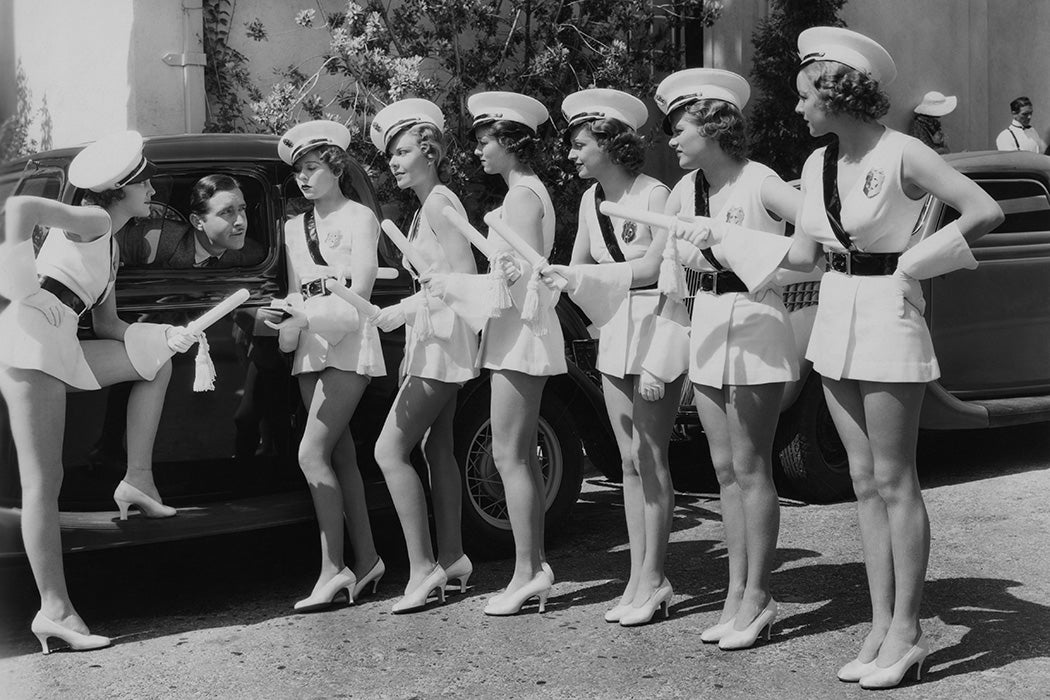With the dawn of silent films came a public fascination with “extra girls,” young women who went to Hollywood for tiny parts in motion pictures. But even though they helped create Hollywood as we know it, these women were used to mask the motion picture industry’s exploitative labor practices.
Analyzing the history of these women and their place in Hollywood, media studies scholar Denise McKenna finds that extra work was an early staple of the emerging studio system—it was initially billed as work suitable for unemployed actors. But at the same time as moviegoers were fascinated by extra girls throughout the teens and 1920s, McKenna writes, they projected deep ambivalence about women’s changing roles onto the actresses.
McKenna notes that the very word “extra” implied expendability. Extra girls’ work was downplayed and devalued by studios, audiences, and people who lived in Los Angeles, becoming part of what McKenna calls “the latest incarnation of the fallen woman” as their morality was called into question. Sometimes associated with prostitution, they were mocked even as they were revered.
Angelenos became so concerned about the potential immorality of extra girls that they launched an investigation into the treatment of women within the studio system, even enlisting the Los Angeles Police Department to appoint “City Mothers” to supervise and assist them.
As the studios grew in size and power, they developed hierarchies. Extra work was at the bottom, and due to widespread unemployment in Los Angeles, an influx of film hopefuls, and no strong union, studios depressed the wages for extra work. “For extras, whose very status was defined by their anonymity and exchangeability,” writes McKenna, “the ability to negotiate was almost non-existent.”
Union organization was stymied by the itinerant nature of extra work, and studios worked to maintain a virtuous face and distance themselves from would-be organizers. “Union agitation aligned the studios with working-class identity and radical politics at a time when the film industry was still working to establish itself as a respectable cultural institution and attempting to expand its appeal to a middle-class audience,” McKenna writes.
More men than women worked as extras, and male extras bore their own stereotype: lazy. But the association of extra work with fame-seeking women devalued it across the board. It allowed the studios to gloss over the radical working-class men they saw as a threat to their public image. Meanwhile, there was always someone to step in for a disgruntled worker.
Get Our Newsletter
Ultimately, writes McKenna, the extra girl’s glamorously salacious image became a smokescreen for the studio system’s reliance on unfair and exploitative labor practices. Extra girls were discovered, not self-made, the myth went, and their job consisted mostly of looking good and standing around. Only in the wake of the 1921 Fatty Arbuckle scandal, in which a popular male star was accused and ultimately acquitted of raping and killing an aspiring actress, did the studios begin to change the ways they treated the extras they relied on. By then, McKenna writes, “the extra girl emerged as both the representative of and rationale for a type of labor whose worth could be discounted.”







